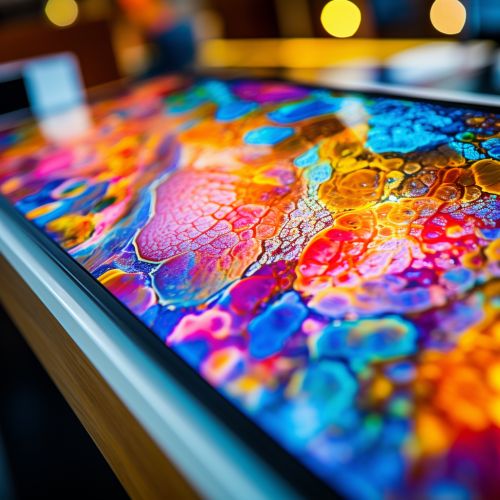OLED Technology
Introduction
OLED technology, short for Organic Light Emitting Diodes, is a type of display technology that involves the use of organic compounds to emit light when an electric current is applied. This technology is used in various applications, including televisions, smartphones, and computer monitors, due to its ability to produce high-quality images with vibrant colors and deep blacks.


History
The concept of OLED technology was first introduced in the early 1980s by researchers at the Eastman Kodak Company. The first practical OLED device was created in 1987, marking a significant milestone in the development of this technology. Since then, OLED technology has undergone significant advancements, leading to its widespread use in various electronic devices today.
Working Principle
OLED technology operates on the principle of electroluminescence, a phenomenon where light is emitted from a material when an electric current or a strong electric field is passed through it. The organic compounds used in OLEDs are engineered to emit light when an electric current is applied. These compounds are typically sandwiched between two electrodes, one of which is transparent to allow the emitted light to pass through.
Advantages and Disadvantages
OLED technology offers several advantages over traditional display technologies such as LCD. These include superior image quality, faster refresh rates, and the ability to produce true blacks. However, OLED displays also have some disadvantages, including shorter lifespan and susceptibility to screen burn-in.
Applications
OLED technology is used in a wide range of applications. These include televisions, smartphones, computer monitors, and digital signage. OLED displays are also used in some virtual reality headsets due to their high refresh rates and superior image quality.
Future Developments
The future of OLED technology looks promising, with ongoing research focused on improving the lifespan and efficiency of OLED displays. In addition, new applications for OLED technology are being explored, including flexible and transparent displays.
